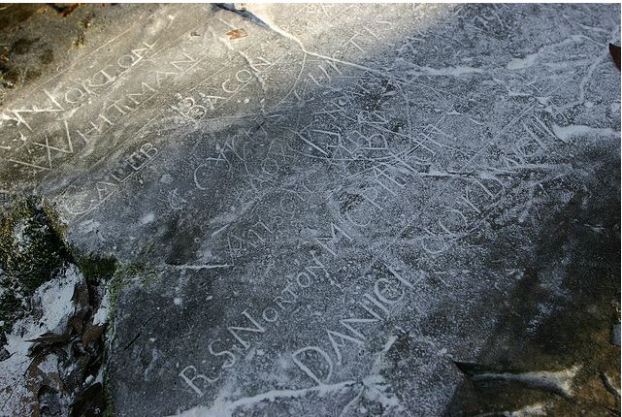Deep within the woods of Rattlesnake Mountain in Farmington are the remains of a late-18th-century smallpox inoculation hospital. A long stone ledge known as Hospital Rock is all that is left of the structures that once sheltered those seeking protection from the deadly smallpox virus. Carved into Hospital Rock are names of 66 of the hospital’s patients that testify to the realities of life in 18th-century Connecticut.
Evidence suggests the hospital consisted of several wooden structures set back from Settlement Road, which carried travelers from Farmington to New Britain. The hospital was the brainchild of Eli Todd, a Farmington physician and one of the founders of the Hartford County and Connecticut Medical societies, and Theodore Wadsworth of Southington, who treated smallpox while serving in the Continental Army. Both men apprenticed themselves in medicine at an early age and were established physicians when founding the smallpox inoculation hospital in 1792.
Isolated Rattlesnake Mountain Serves as Hospital Site
Smallpox was a deadly virus that reappeared regularly throughout Connecticut for much of the 17th and 18th centuries. By the time Todd and Wadsworth opened their hospital, inoculations for the disease consisted of infecting patients with trace amounts of the virus in order to allow them to build up an immunity to it. While infected, the patients needed to be isolated from the general population for 3 to 4 weeks. Rattlesnake Mountain proved to be an ideal location for providing the required isolation.
While patients convalesced, there was ample opportunity for socialization on the hospital grounds. One popular spot where this occurred was a sunny, flat ledge where relatives of patients came, often by stagecoach, to leave food and clothing for their loved ones staying in the hospital. This ledge eventually became known as Hospital Rock.
The hospital ceased operations in 1794 when Dr. Edward Jenner developed a vaccine for the treatment of smallpox. In the years that followed, nature reclaimed much of the surrounding area. In 2002, however, the Connecticut Historical Commission declared Hospital Rock an Historic Archeological Site. It is now part of a popular hiking and recreation area in the town of Farmington.









